Are we being priced out of our own housing market? Is renting-for-life really so bad? A growing frontline of architects and developers are addressing the challenge with progressive housing models that offer new avenues for entering the housing market.

Outdoor Courtyard of Ozanam House by MGS Architects. Photography: Trevor Mein.
November 15th, 2019
Sector-led, pioneering housing typologies for low to medium income earners and social housing solutions are emerging from the coalescence of rising living, construction, land and house costs moderate wage growth, and increased population pressures.
From the Assemble Model’s ‘build-to-rent-to-own’, to Nightingale’s not-for-profit ‘housing at cost’, and VincentCare’s integrated homelessness resource centre wrapped around short-, medium- and long-term social housing – we explore three housing delivery models that are centred around sustainability, quality and community.

Assemble Model sketch. Courtesy of Fieldwork.
Developer Kris Daff, managing director of Assemble, decided to create a new way of delivering housing with a “greater sense of purpose” than Australia’s predominant pre-sale off-the-plan model.
The embodiment of a design thesis, Assemble – socially responsible, medium-density apartments – are influenced by Daff’s interest in multi-family housing models seen in the US and in exploring “rental neighbourhoods”.
Assemble’s build-to-rent-to-own development model primarily targets 20- to 40-year-old low-to-medium income earners who aspire to own a home, as well as an emerging group of 60-plus years, single-person households with a skew to women. This vision will see the return of homes that are affordable in locations close to work for ‘key workers’ displaced to outer suburbs.
“These are the have-nots. They don’t feel like they are being offered a fair way to participate in the housing market like generations before them, when tenure certainty was attainable by ownership more affordably,” says Daff. “We have a generation of Australians who are facing an uncertain housing future and constant dislocation with short-term leasing.”
Compelled to act, Daff’s ‘program’ is structured to overcome “one of the biggest hurdles” to home ownership: the deposit. Under the Assemble Model people get a two-year “head start” to save during their home’s construction and the tenure certainty of a five-year lease at an agreed up-front “market rent”.
To give people the chance of getting a foothold in tomorrow’s housing market today, there’s the option of buying the home at a pre-agreed price once the lease is up, or to exit with bond intact. “A huge commercial imperative” is inbuilt to deliver quality product.

Nightingale Evergreen by Clare Cousins Architects – view of building with seven levels including rooftop. Image: Thurston Empson.
“The Assemble Model allows us to generate a unique alignment with our communities by selling to people who are going to live there – and for the customer to decide whether or not we have fulfilled our promise,” says Daff. “Our design team is very focused on designing for a ‘full life’ on a small footprint in an apartment that’s affordable.”
Around 75 per cent of Assemble’s product “is reverse-engineered” to meet the industry’s affordability yardstick – so that rent or repayments do not top 30 per cent of a household’s income. Yet uncompromised is sustainable design that maximises natural light and cross-ventilation with enduring fittings, fixtures and materials.
The firm’s “commitment to the curation and development of communities” is manifest in the building’s “collection of common areas” – designed for resident interactions such as workshops, art, yoga, kids’ play, library, lounges and landscaped spaces.
Cohort design is another key pillar. “We consider how many households (apartments) can realistically get to know each other in any meaningful way and form community, per lift core, per floor,” says Daff. Market response has attracted people united by “a genuine interest in forming community and having a long-term productive life there.” It’s not for investors.
The first Assemble residents of 393 Macaulay Road, Kensington in inner Melbourne will move in, late 2020. Pacing-wise, the firm expects to deliver 500 homes per year, while containing numbers in each development to uphold the sense of community.

Ozanam House by MGS Architects. Photography: Trevor Mein.
We need to think beyond skyscrapers and infrastructure-poor urban fringes to address the shortfall of housing that’s deemed affordable in Australian cities, says Clare Cousins, director of Clare Cousins Architects (CCA).
An ‘ethical housing movement’ instigated by architects and developers to cultivate “smaller, community-focused apartments, which keep footprints efficient but spacious – offset by generous shared amenities – is presenting one viable alternative,” she says. “At the end of the day, the land, construction costs and fees are generally the same in any development – so it’s about what levers – do you pull to try and deliver high-quality, reductive design as affordably as possible?
“The challenge has been the average-to-poor overall built quality of apartments in Australia over the last couple of decades – a model of building and flipping it,” cautions Cousins. “We are seeing the fruits of that play out now.”
It was the opportunity to apply ‘housing quality principles’ – to create apartments in sustainable locations so the apartment becomes a desirable typology to live in – that drew Cousins to the Nightingale model. Its not-for-profit approach, which aims to deliver “sustainable housing at cost”, was conceived in Melbourne by Breathe Architecture with the help of Architecture Architecture, Austin Maynard Architects, CCA, MRTN Architects, Six Degrees Architects and Wolveridge Architects.

Outdoor Courtyard of Ozanam House by MGS Architects. Photography: Trevor Mein.
As both architect and developer of Evergreen Nightingale, one of six buildings in Brunswick’s Nightingale Village precinct, Cousins says: “To deliver quality housing as cost effectively as possible there has to be consideration given to what we need to live simply and what amenities could be shared.”
Disrupting the way housing is built on a wider scale, Evergreen caters to a diversity of home buyers from entry level Teilhaus (micro) studios of approximately 35 square metres which borrow from the space efficiencies of CCA’s Flinders Street project, to three-bedroom apartments. Like all Nightingale projects, Evergreen adopts the ethos of allocating 20 per cent of stock to affordable inclusionary housing to increase access to high-quality, sustainable housing.
Cousins advocates for “quality buildings that will stand the test of time” rather than regulating minimum apartment sizes, which poses “a barrier to affordability”. “Each apartment is designed to be desirable but is priced to reflect its orientation and height within the building,” she says. The more affordable southern-facing apartments – on lower floors – enables community housing providers to buy a batch outright for their tenancy portfolio.
The delivery of architect-designed ‘housing at cost’ with exceptional communal spaces, thermal comfort, liveability and low running costs does call for resident buy-in to sustainable transport modes and a collective laundry. Commercially, though, while ongoing financial, social and ecological sustainability does weigh into ‘affordability’ alongside purchase price – “because the upfront benefits are invisible, new housing model delivery is a balance between the market threshold and what people are prepared to pay.”

Outdoor Courtyard of Ozanam House by MGS Architects. Photography: Trevor Mein.
VincentCare’s Ozanam House provides every opportunity for people experiencing homelessness – 25,000 people in Victoria alone (according to VincentCare) – to access housing, health and social support services tailored to their needs. Located north-west of the medical precinct in North Melbourne, the fully integrated accommodation and homelessness resource centre designed by MGS Architects (MGS) “has co-located wrap-around services that are unprecedented in scale”, explains Eli Giannini, director, MGS.
On entry to the ground-floor foyer, health services ranging from optometry, podiatry, GP, dental, psychology and counselling spaces are situated to one side. Opposite, there is a community hub with a social enterprise café, an IT training room and different types of seating overlooking a courtyard and fishpond.
The floorplan follows a “natural progression” that’s linked to the stage of a client’s journey from crisis support through to securing one of the 133 apartments comprising 61 short-term, 48 medium-term and 24 long-term options.
Joshua Wheeler, MGS director says, “the building is configured so that on arrival people can be offered crisis accommodation and at the same time be assessed in all they need – be it health, counselling, financial, social or employment assistance.”

Outdoor seating in Ozanam House by MGS Architects. Photography: Trevor Mein.
Maximising engagement opportunities between clients and staff and forming new communities within is supported by amenity and programming. “The building is designed for the individual and the community. It’s not an institutional building. It’s a place where someone is welcome to choose what they’d like to do, indoors or out. That could be to have a sleep, charge their phone, take a shower, do some washing, have a coffee or a meal, have a chat or connect with a staff member, or simply find a spot to be alone.
“Commitment is sought from the client to engage with VincentCare services – befitting their personal circumstances – to deal with issues putting them at risk of homelessness, exiting homelessness or entering housing,” says Wheeler.
There are two distinct entrances to the accommodation, one for the medium- and long-term residents to the side, while access
to short-term lodgings is via the main entrance for clients still finding their feet. “The client wanted to make sure that as people had progressed through the program, that medium- and long-term apartment tenants would have a similar experience to that of a private rental,” Giannini says.
Devised to “counter the tendency for people who have been living on the street to be disengaged and to drift from one centre to the next, the food program is the carrot.” A very clear investment has been made in sourcing local, aesthetic materials alongside quality fittings and fixtures.

Eating Area at Ozanam House by MSG Architects. Photography: Trevor Mein
“Material quality, light and colour are the three elements that we concentrate on to create a welcoming and warm environment. The fourth is for people to be able to make a space their own,” she outlines.
Furniture and fixture specification by the architects not only makes for a cohesive fit-out, it’s about fostering a sense of pride in place and empowering residents – “who have finally found a place that they can call home” – a choice of ways they can arrange furniture in their own rooms.
Each long-term apartment enjoys views, high ceilings and is decked out with a robe, desk, king-size single bed and kitchenette. The design intent was to conjure the feeling that ‘I’m okay, someone’s got my back’, according to Wheeler. “We were very conscious of using natural timber and stone and fabrics that are incredibly durable but look like real fabric – to counter the institutional feel,” adds Giannini.
So much more than providing a roof, Ozanam House speaks to MGS’ commitment to social housing over the past 30 years, approached by creating high-quality residential apartments “that promote social connection, sustainability, and an ability for the tenant to feel that they have moved into a home not a facility”.
A ready prototype for further simulation, the AUD$47-million centre was delivered by VincentCare with support from philanthropic organisations, business and government.
INDESIGN is on instagram
Follow @indesignlive
A searchable and comprehensive guide for specifying leading products and their suppliers
Keep up to date with the latest and greatest from our industry BFF's!
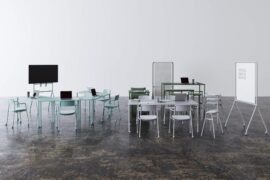
Welcomed to the Australian design scene in 2024, Kokuyo is set to redefine collaboration, bringing its unique blend of colour and function to individuals and corporations, designed to be used Any Way!
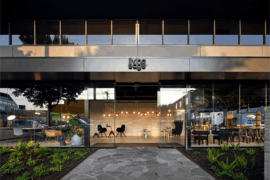
For Aidan Mawhinney, the secret ingredient to Living Edge’s success “comes down to people, product and place.” As the brand celebrates a significant 25-year milestone, it’s that commitment to authentic, sustainable design – and the people behind it all – that continues to anchor its legacy.

London-based design duo Raw Edges have joined forces with Established & Sons and Tongue & Groove to introduce Wall to Wall – a hand-stained, “living collection” that transforms parquet flooring into a canvas of colour, pattern, and possibility.
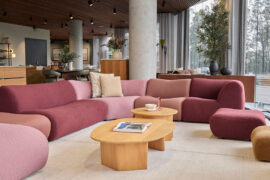
Poised at the intersection of design and service, King Trade has launched a new dedicated hub in Bondi Junction, which offers tailored product, service and pricing for architects and interior designers.

‘The Mandate Mirage: 2025 Workplace Futures Survey’ is a new report by international design practice Hassell, revealing that the real drawcard for attracting employees to the office in-person is choice.
The internet never sleeps! Here's the stuff you might have missed
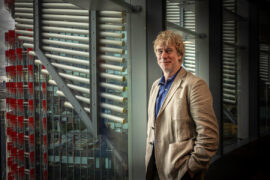
The Senior Design Director at RSHP reflects on Barangaroo South Masterplan during a visit to Sydney marking ten years since the completion of the first phase.
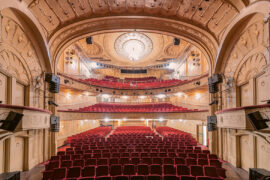
A new book documents the city’s historic building interiors, from 1800s coffee palaces to post-war modernist spaces.
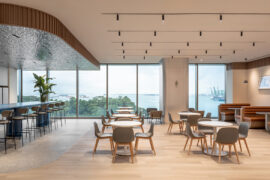
Bean Buro’s Singapore office for Anglo-Eastern is a poetic continuation of their Hong Kong headquarters — a workplace that balances identity and calm.

CPD Live’s final live-presented season for 2025 continues with a powerful Day 2 lineup, delving into façade weatherproofing, apartment design trends, smart bathrooms, and digital compliance. Starting from 9 AM AEDT, these free CPD-accredited sessions will help you finish the year with fresh insight and full compliance confidence.